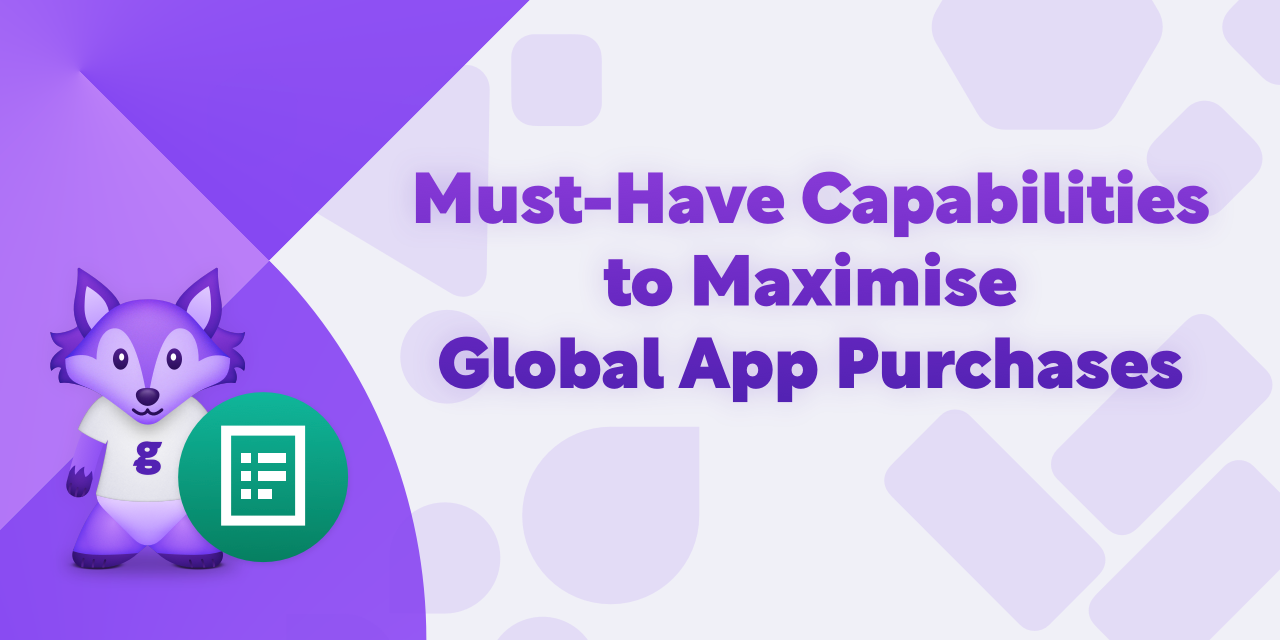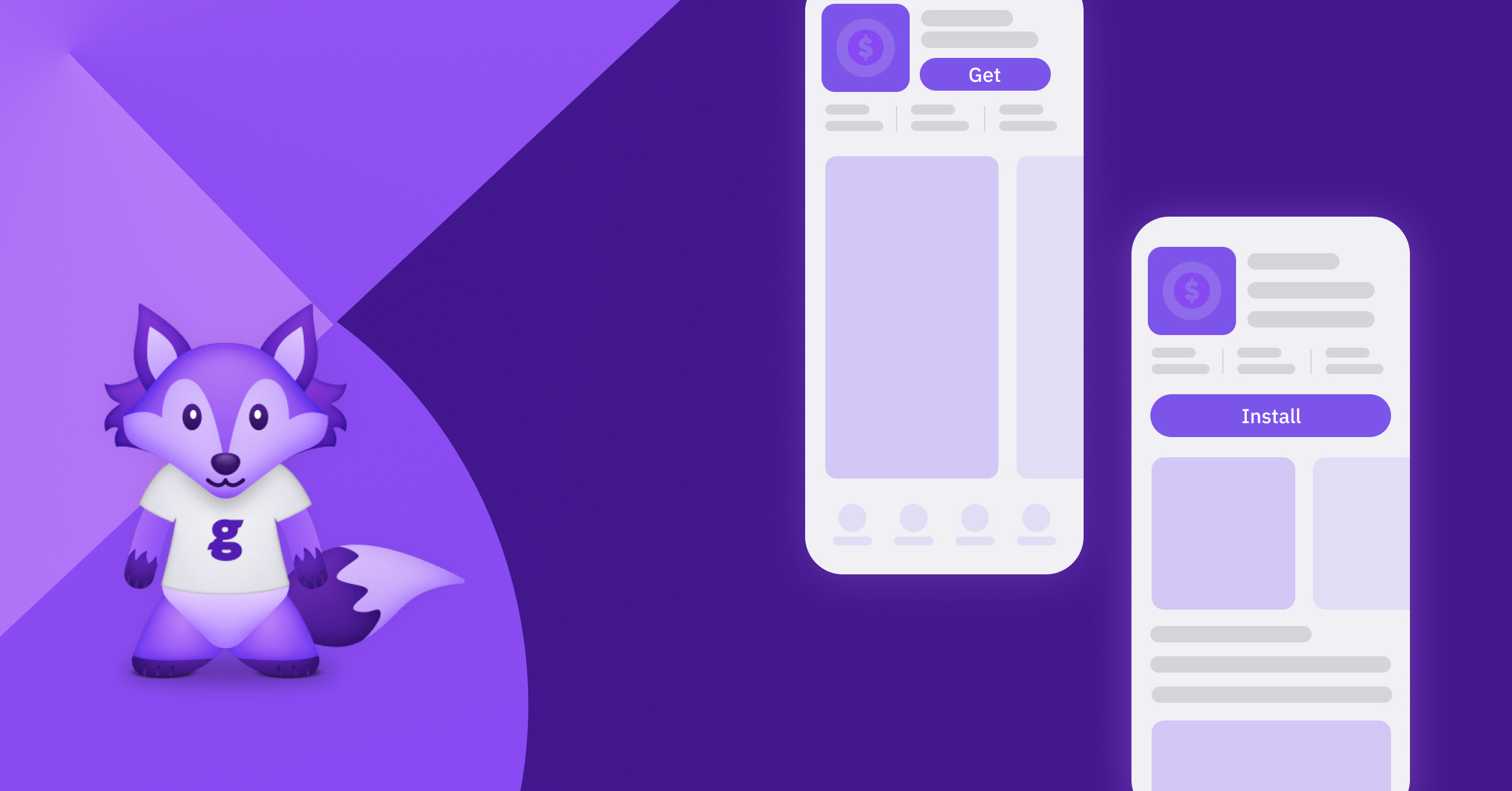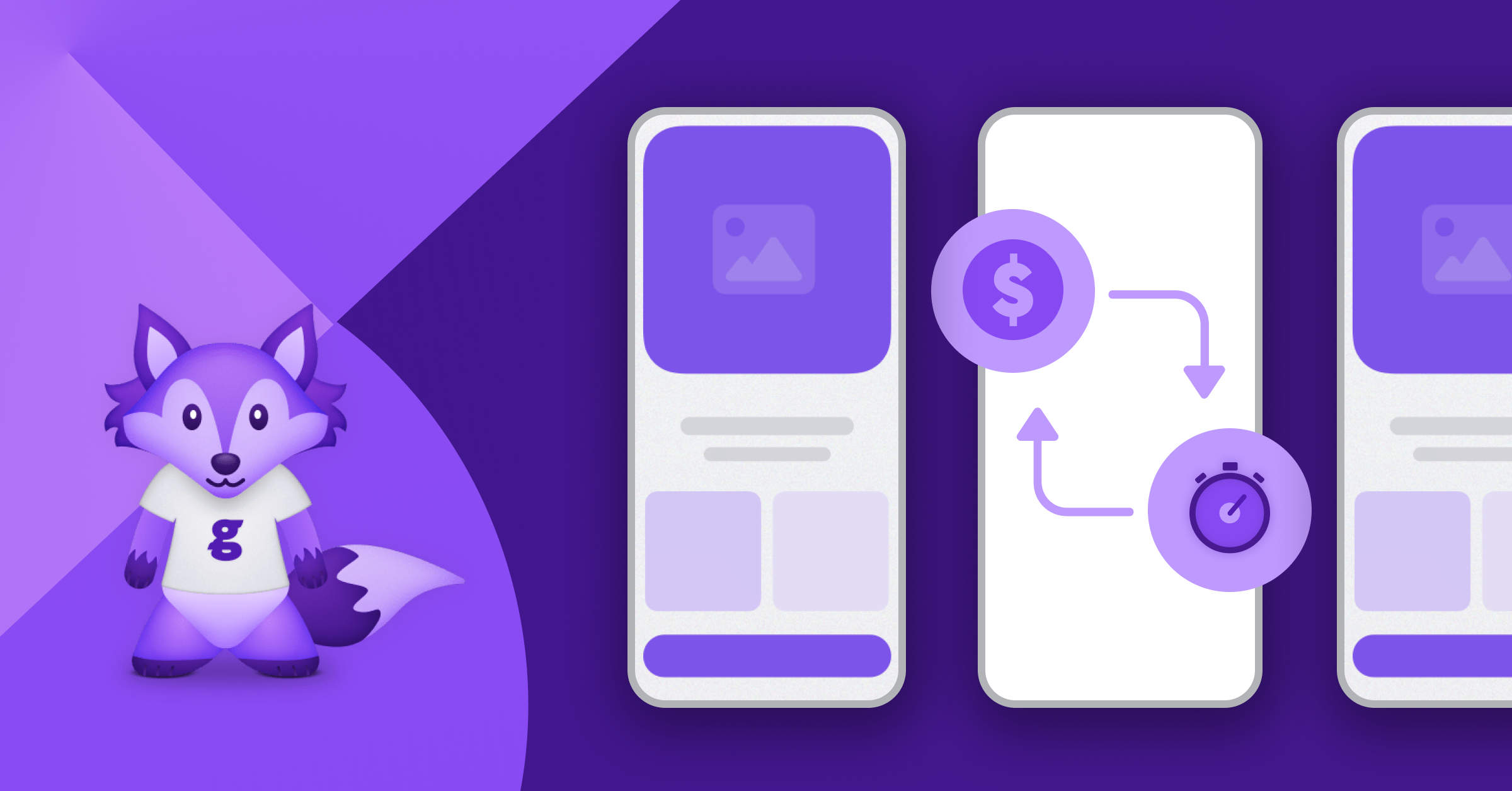Content
The Must-Have Capabilities of a Global App Revenue Engine

Apps are doing better than ever by almost every metric. The number of downloads, the time consumers spend in apps, the spending on in-app purchases and subscriptions – all of these numbers are growing.
In 2021, people spent more time on mobile apps than ever before. The number of mobile app downloads has nearly doubled in the last six years, growing 81 percent, from 141 billion annually in 2016 to 255 billion in 2022. And consumers’ willingness to spend on in-app purchases and subscriptions has grown. In many ways, it’s a better time than ever to build a great app idea into a reality.
Yet the landscape for making commercially successful apps is increasingly complex: There are ever more companies building apps, and individual developers themselves are in more and more in demand. Regulators are ramping up pressure and rules for consumer data protections. And amid the tightening regulatory landscape, third-party app stores are becoming viable; Apple is opening up its app store to third party stores. Every store that app owners want a presence in increases complexity, and now that complexity could increase exponentially.
That means that app creators need a global approach to monetization – one that can carry them through the maze of competitive, regulatory and market realities to an efficient strategy that shoulders most of the burden of offering a product, from beta to maturity, so the team can focus on navigating other complexities.
The answer is a platform approach – a central, single solution, that, coupled with the expertise of a partner who knows the space well – to position your app for success. What this looks like in practice is a solution that provides an orchestration layer across all monetization events and stores. It also encompasses three key areas of capability:
- Build. Your infrastructure to launch any store in-app and web.
- Learn. Your sources of truth for user monetisation data in standardized format that are available across your stores and offerings.
- Grow. These are the tools to drive growth, powered by learnings.
The fast-changing, challenging app development landscape
In the face of rising interest rates and increasing competition from other app creators, funding has dried up and investors are becoming choosier about the app startups they fund. They’re demanding clear strategies for user acquisition and retention, monetization, audience definition and product roadmap.
Meanwhile, app stores and regulators are adding complexity to monetization: The Apple App Store added privacy protections that make it more difficult to target ads. The European Union’s Digital Marketing Act (DMA) is becoming enforceable as soon as this year and will increase oversight of personal data use for advertising purposes (on the other hand, it may force more competition among app stores, potentially lowering costs for consumers and increasing revenue for developers). In-app purchases remain a strong, viable way to add to revenue streams, but The Federal Trade Commission is paying more attention to what apps are doing with personal data and marketing practices.
Why your team needs a platform approach to monetization
App development teams face plenty of challenges as it is – time, resources and risk, and often need to operate with fewer engineers in face of competition for funding. When those teams are further saddled with responsibility for setting up and maintaining the app across multiple stores, all with different requirements and needs, and the marketing team and growth engineers are grappling with differently formatted data delivered at different intervals, it’s hard to make sense of what’s working and what’s not to make data-driven decisions. It’s impossible to do so in real time. Additionally, we are all just simply DONE with hobbling together sometimes dozens of point solutions to build a customisable experience for our use cases - the cost and risk are simply just not worth it - nobody is happy in the end. Just the other day, Jonathan Kazarian
Paywalls are another hurdle. Stick-built means infinite customizability, but it’s another distraction from the engineering team’s core product focus – a distraction that will proliferate with new app stores coming to market.
Subscriptions are still a small part of overall app revenue. Although apps made $133 billion in revenue in 2021, only $15 billion was from subscriptions. Yet this form of monetization is growing. A recent Statista report noted that, “As of September 2021, the number of paid apps has shrunk to make up only six percent and four percent of the total numbers in the Apple App Store and the Google Play Store, respectively. In comparison, apps offering subscription plans are becoming increasingly popular in the monetization landscape.”
That makes it ever more important that the user experience across stores needs to be consistent, so that a unique user can interact with an app regardless of whether he or she is on the web or in a mobile app. App creators also continue to struggle with delivering an optimal mobile app experience – a key factor in how apps are used and adopted. Research has shown that products with both a mobile and web presence show 3.5 times the amount of revenue as products that don’t, strongly suggesting that a multi-store approach is critical to the bottom line.
Any development team worth its salt can aggregate the data into something meaningful, build integrations and their own storefronts, paywalls, and ways to recognize unique users across modalities. But at what cost? While many point solutions are available to address these issues, they don’t talk to one another, creating more to manage.
The components of an app revenue management tool
The solution lies in a strategy that addresses all of these issues. When you’re choosing an app monetization solution, this strategy framework can help you identify the essential elements.
- Build. This is your infrastructure for efficiently adding new app stores, across regulatory environments and geographies. Keep in mind, major players like Apple are considering opening up to other stores in today’s regulatory environment. While Apple and the Google Play Store are still the dominant players, other stores could drive competition for niche user groups. Depending on your ideal customer profile, you’ll need to monitor and build for those stores as well. With the right platform, this should be a one-click operation rather than multiple sprints for each store.
Reveri, an evidence-based wellness app that helps users manage stress, insomnia, pain and other conditions, increased its revenue 90 percent the month after implementing a multi-store experience using the Glassfy app revenue management platform. Reveri CEO Massimo De Marco concedes that they would have likely doubled revenue eventually. But that massive leap in monthly recurring revenue, enabled by the Glassfy platform, powers the bottom line just like compounding interest does. Investors, channel partners and potential buyers pay very close attention to those kinds of numbers.
- Learn. Real time analytics. Integrating data from batches and streams, with different formats, and displaying it in an actionable manner on a dashboard takes time and effort, but making data-driven decisions is critical, and accessing that data in real-time or near real-time is equally so.
“Financial data is hard to trust,” said J.B. Theard, head of product for MindDay, a mental wellness app. MindDay initially chose Glassfy for its web store capabilities and its ability to handle advanced subscription use cases. The company had another solution for analytics, but soon discovered that Glassfy’s data capabilities more than met their needs. “It is very hard to find trustworthy financial analytics,” he said. “I am very happy.”
And from subscriptions to in-app purchases to universal codes that work across apps so that you can offer bulk subscriptions at the enterprise level, paywall use cases are myriad and can be surprisingly complex. Your solution should handle these easily and allow any necessary customizations that could provide a diverse and rich monetization experience for the user. It should also give you a robust set of data to learn what is working and not working to then tweak your offerings.
- Grow. Out-of-the-box connections to third-party services should be available and easy to set up and customize as needed, whether that’s attribution, external analytics, or many others. While the right monetization platform should handle major core capabilities, those that require building your own connections from scratch should be avoided.
How can you create and use universal codes and SKUs across stores, and then aggregate that product information? How can your users give a subscription? How can you share promotional coupons? No development team wants to tell marketing, “well, we can build that, I guess…”
A complete solution, though, requires a final, critical element: the expertise of an experienced, trustworthy partner. Most software or platform providers can offer quality support. But it’s another thing altogether to partner with a company that has combined decades of experience in app monetization.
With Glassfy, co-founder Alex Kudelka says, “App creators are getting decades of experience, based on what we have learned over time working with customers of many different sizes and stages. We’re almost like a part of their team.”
Glassfy: the app revenue management platform
24me is a productivity application that offers an all-in-one solution for stressed and busy consumers to manage calendars, tasks, notes and time in one place. As the company prepared to launch, they were looking for a monetization platform with superior capabilities.
“It started with a gap we had into visibility about our users,” CEO and co-founder Gilad Hertanu said. “We had subscription management in place. But what we were missing was a view into the performance and behavior of those subscriptions.”
24me adopted Glassfy to gain those insights, allowing them to gauge the performance of their marketing initiatives – crucial when an early-stage application is finding its market footing and solidifying messaging. “Instead of firing in the dark and not really knowing if it was working or not, now we have much better visibility.”
In addition, the Glassfy client team was on hand not only to help with any troubleshooting, but to lend industry leader expertise to strategy and all aspects of the monetization platform.The seamless integration also provides a good user experience across web and app, too.
“We have excellent reporting on how the business is doing, which would have been a lot more work to do in-house,” Hertanu said. “We would have had to hire data engineers. So, to go to market would have taken time, and added more issues and more complexity. For sure it saves us significant time.”
That’s a decided advantage not only for small development teams, but for any development team.
Read More



